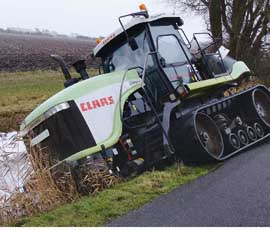Farm deaths up 10%, HSE figures show

New health and safety figures show the number of agriculture workers killed in the UK rose by 10% in the past year.
In total across the UK, 33 agriculture workers were killed at work from April 2011 to March 2012, an increase from 30 deaths recorded in the same period in 2010-11.
Of the 33 workers killed in agriculture, 11 were employees and 22 were self-employed.
The rate of fatal injuries in 2011-12 was 9.7 deaths per 100,000 workers, an increase from 8.7, recorded in the previous year.
The figures also showed six members of the public were killed last year as a result of activities related to agriculture.
However, the number of fatalities is slightly below the five-year average of 35 deaths per year in agriculture.
“We must not forget that these are lives cut short, not statistics – every single one of these deaths will have caused terrible grief and anguish for family and friends as well as workmates and colleagues.”
Judith Hackitt, HSE chairman
The official statistics published by the Health and Safety Executive (HSE) on Thursday (5 July) show the number of workers killed in Britain last year remains largely unchanged, at 173 – down two on the previous year.
But critics will be concerned by the statistics for the agricultural industry, which show that it is still the most dangerous profession, although it only employs 1.5% of the UK’s workforce.
Despite all the industry campaigns to reduce the number of fatalities and industries, farming is still lagging behind other industries in reducing the number of deaths.
Judith Hackitt, HSE chairman, said: “We must not forget that these are lives cut short, not statistics – every single one of these deaths will have caused terrible grief and anguish for family and friends as well as workmates and colleagues.
“This is the real tragedy of health and safety failures – lives cut short and loved ones lost.”
“We want employers to focus on the real risks that continue to cause death and serious injury. HSE is working very hard to make it easier for people to understand what they need to do and to focus on the real priorities. Protecting people from death and serious injury at work should be at the heart of what we all do.”
